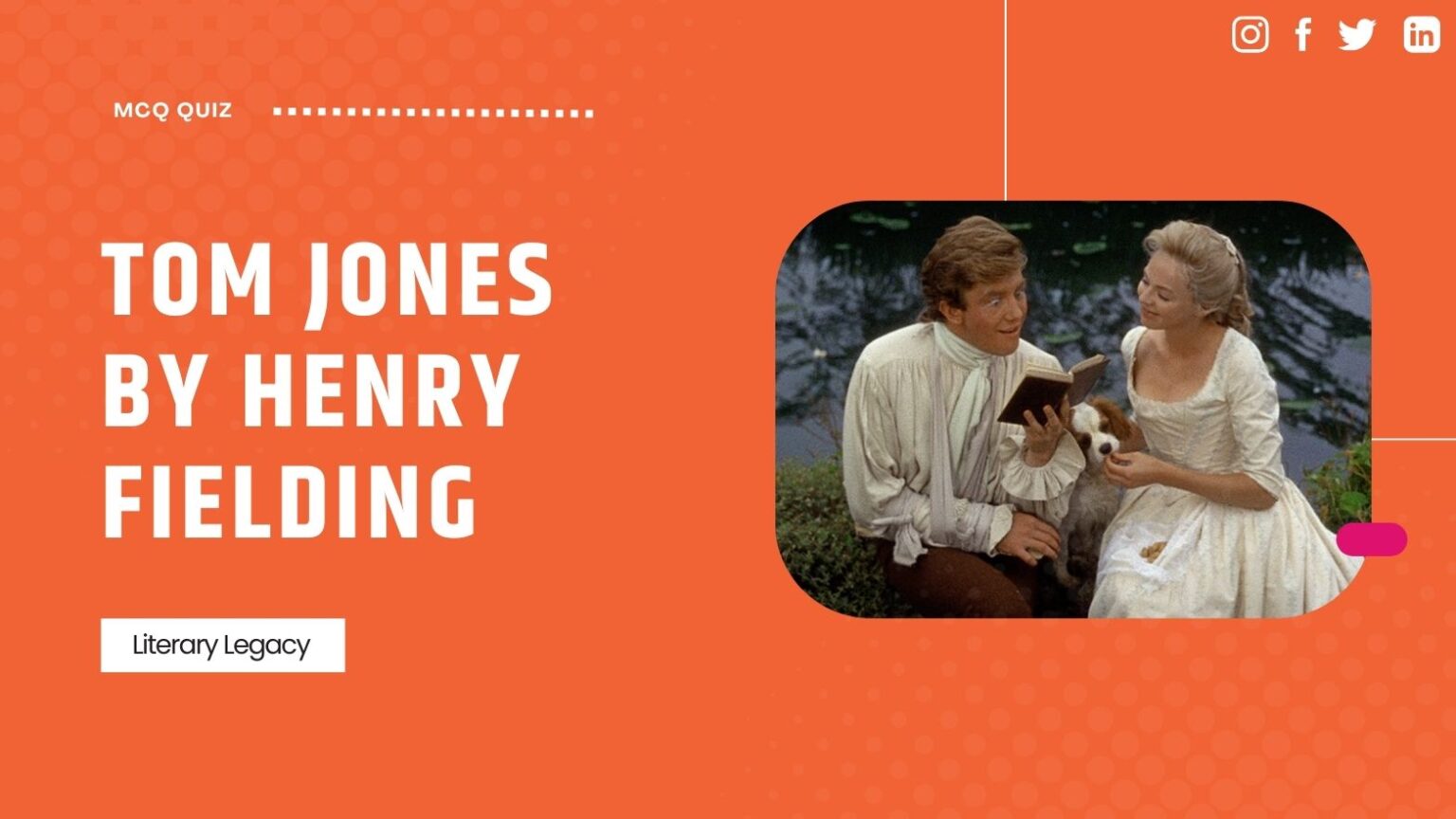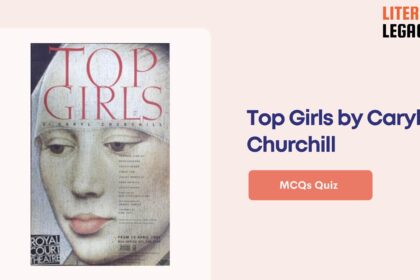1. What is Blifil’s primary characteristic that undermines his appearance of virtue?
Choices
A) His greed
B) His kindness
C) His loyalty
D) His intelligence
Answer: (A)
His greed
Blifil pretends to be pious but is ultimately governed by greed.
2. How does Squire Western primarily express his affection towards his daughter Sophia?
Choices
A) By verbal praise
B) By arranging lavish parties
C) By violent behavior
D) By encouraging her independence
Answer: (C)
By violent behavior
Squire Western’s character is portrayed as affectionate yet violent towards Sophia.
3. What is Mrs. Western’s goal in the narrative regarding her daughter Sophia?
Choices
A) To ensure her happiness
B) To promote a political agenda
C) To elevate their social status
D) To teach her about virtue
Answer: (C)
To elevate their social status
Mrs. Western aims to improve the Western name by marrying Sophia to a wealthy man.
4. Which character consistently boosts Tom’s reputation but also causes trouble for Sophia?
Choices
A) Partridge
B) Lady Bellaston
C) Squire Western
D) Mr. Fitzpatrick
Answer: (A)
Partridge
Partridge creates problems for Tom and defiles Sophia’s reputation.
5. What character trait defines Lady Bellaston in her interactions with Tom and Sophia?
Choices
A) Indifferent
B) Compassionate
C) Malicious
D) Supportive
Answer: (C)
Malicious
Lady Bellaston is characterized by her malicious nature and self-interest.
6. What sets Mrs. Miller apart in her role in the story?
Choices
A) Her intelligence
B) Her strictness
C) Her loyalty
D) Her wealth
Answer: (C)
Her loyalty
Mrs. Miller is portrayed as a faithful friend and a caring mother.
7. Which character transforms and adopts Tom’s principles of honour by the end of the story?
Choices
A) Nightingale
B) Thwackum
C) Squire Western
D) Partridge
Answer: (A)
Nightingale
Nightingale transforms and aligns with Tom’s values by the end of the novel.
8. How does Thwackum, the tutor, primarily behave towards Tom?
Choices
A) With criticism and violence
B) Supportively
C) Indifferently
D) With teaching and encouragement
Answer: (A)
With criticism and violence
Thwackum is vicious, often criticizing Tom and favoring Blifil.
9. What motivates Mr. Dowling’s shift in allegiance during the story?
Choices
A) Loyalty to Tom
B) Personal ambition
C) Ideological belief
D) Greed for wealth
Answer: (D)
Greed for wealth
Mr. Dowling operates out of expediency and shifts sides when it benefits him.
10. What aspect of Bridget Allworthy’s character is highlighted in relation to her affections for Blifil and Tom?
Choices
A) Her financial status
B) Her devotion to religion
C) Her fluctuating loyalty
D) Her beauty
Answer: (C)
Her fluctuating loyalty
Bridget’s affections waver as her sons mature, eventually favoring Tom.
11. What motivates Captain Blifil’s jealousy towards Tom Jones?
Choices
A) Tom’s relationships with women
B) Tom’s superior athletic ability
C) Tom’s education and manners
D) Tom’s bond with Allworthy
Answer: (D)
Tom’s bond with Allworthy
Captain Blifil is jealous because Allworthy shows consistent affection for Tom, while Blifil desires Allworthy’s possessions for his own son.
12. How does Allworthy respond to the situation with Jenny Jones and Mr. Partridge?
Choices
A) He adopts both of them into his household
B) He sends Jenny away and allows Partridge to leave
C) He ignores their involvement completely
D) He punishes them both harshly
Answer: (B)
He sends Jenny away and allows Partridge to leave
Allworthy decides to send Jenny away from the county and allows Partridge to leave on his own accord after uncovering their guilt.
13. What aspect of Tom’s character causes him to gain sympathy from the parish?
Choices
A) His gentle demeanor
B) His academic achievements
C) His adherence to societal norms
D) His charity towards Black George’s family
Answer: (D)
His charity towards Black George’s family
Tom gains sympathy from the parish because of his generosity towards Black George’s family, contrasting with Blifil’s sneakiness.
14. What ultimately causes Tom to end his commitment to Molly Seagrim?
Choices
A) Tom’s desire for wealth
B) Molly’s infidelity and affairs
C) Molly’s family disapproval
D) Molly’s lack of interest in him
Answer: (B)
Molly’s infidelity and affairs
Tom ends his commitment to Molly when he learns that she has been having affairs, freeing him to confess his feelings to Sophia.
15. What role does Squire Western play in Tom’s life?
Choices
A) He is a close neighbor impressed by Tom’s sportsmanship
B) He opposes Tom’s relationship with Sophia
C) He tutors Tom academically
D) He is Tom’s biological father
Answer: (A)
He is a close neighbor impressed by Tom’s sportsmanship
Squire Western is a neighbor who appreciates Tom’s sportsmanship and spends time with him.
16. How do the tutors, Square and Thwackum, perceive Tom Jones compared to Blifil?
Choices
A) They treat both boys equally
B) They despise Tom and favor Blifil
C) They respect Tom for his intelligence
D) They admire Blifil for his rebellious nature
Answer: (B)
They despise Tom and favor Blifil
Square and Thwackum despise Tom’s wildness and adore Blifil’s piety, indicating a clear bias in their treatment.
17. What main action does Allworthy undertake upon discovering the foundling?
Choices
A) He sends the child to a workhouse
B) He immediately seeks the child’s biological parents
C) He decides to leave the child in the care of the parish
D) He chooses to raise the child himself
Answer: (D)
He chooses to raise the child himself
Allworthy decides to bring up the foundling boy, showing his commitment to the child’s future despite the parish’s criticism.
18. Which character initially guides the reader’s perception of Tom’s moral standing?
Choices
A) Mr. Partridge
B) Captain Blifil
C) The narrator
D) Bridget Allworthy
Answer: (C)
The narrator
The narrator’s perspective shapes readers’ perceptions of Tom’s actions and moral dilemmas throughout the story.
19. What significant event occurs after Captain Blifil’s jealousy manifests?
Choices
A) The boys are sent to different schools
B) Captain Blifil suffers a fatal accident
C) Bridget has another child
D) Allworthy expels Tom from the estate
Answer: (B)
Captain Blifil suffers a fatal accident
Captain Blifil falls dead of an apoplexy shortly after his jealousy over Tom Jones surfaces.
20. What motivates Tom to leave Sophia despite his feelings for her?
Choices
A) He wants to pursue a career in law.
B) He is coerced by his aunt.
C) He feels an obligation to follow an honorable path.
D) He believes Sophia will come after him.
Answer: (C)
He feels an obligation to follow an honorable path.
Tom decides to leave because he finds it necessary to uphold his honor despite his love for Sophia.
21. Which character is described as the moral yardstick of the novel?
Choices
A) Master Blifil
B) Tom Jones
C) Mr. Allworthy
D) Squire Western
Answer: (C)
Mr. Allworthy
Mr. Allworthy is characterized as benevolent and altruistic, serving as the moral standard against which other characters are measured.
22. What is the relationship between Sophia Western and Squire Western?
Choices
A) Sister and brother
B) Father and daughter
C) Aunt and niece
D) Cousins
Answer: (B)
Father and daughter
Sophia is the daughter of Squire Western, who is noted for his violent behavior.
23. How does Tom react after finding out about Sophia’s visit to the inn?
Choices
A) He sets out in hurried pursuit of Sophia.
B) He questions Mrs. Waters.
C) He confronts Lady Bellaston.
D) He ignores her presence.
Answer: (A)
He sets out in hurried pursuit of Sophia.
Tom frantically pursues Sophia after discovering that she had been at the inn.
24. What is Master Blifil’s primary motivation regarding Tom Jones?
Choices
A) To marry Sophia at all costs.
B) To prove he is the better gentleman.
C) To seek revenge on Tom.
D) To protect his family’s reputation.
Answer: (C)
To seek revenge on Tom.
Blifil attempts to undermine Tom, driven by jealousy and a desire for revenge against him.
25. What does Lady Bellaston do to try to disrupt the relationship between Tom and Sophia?
Choices
A) She reveals Tom’s past to Sophia.
B) She tells Allworthy to disown Tom.
C) She hires a lawyer to create conflict.
D) She encourages another suitor to force himself on Sophia.
Answer: (D)
She encourages another suitor to force himself on Sophia.
Lady Bellaston tries to sabotage Tom and Sophia’s love by encouraging Lord Fellamar to attack Sophia.
26. What does Sophia do to signal her presence to Tom after running away?
Choices
A) Sends a servant.
B) Shouts his name.
C) Leaves her muff in his bed.
D) Leaves a letter.
Answer: (C)
Leaves her muff in his bed.
Sophia strategically leaves her muff in Tom’s bed as a way to communicate with him after running away.
27. How does Tom’s stabbing of Fitzpatrick impact his life?
Choices
A) He becomes a hero in the country.
B) He is imprisoned and faces legal repercussions.
C) He is banished from the county permanently.
D) He earns the favor of the Squire Western.
Answer: (B)
He is imprisoned and faces legal repercussions.
Tom is thrown into jail after stabbing Fitzpatrick in self-defense during a duel.
28. What does Mrs. Waters reveal to Allworthy that changes his perception of Tom?
Choices
A) Tom has been living as a gentleman all his life.
B) She is Tom’s mother and discloses his true lineage.
C) Tom has squandered his inheritance.
D) Tom is responsible for Tom’s troubles.
Answer: (B)
She is Tom’s mother and discloses his true lineage.
Mrs. Waters discloses that she is Tom’s mother and reveals his true heritage to Allworthy, changing his perspective on Tom.
29. What quality is Tom Jones known for, despite his faults?
Choices
A) His ability to deceive others.
B) His wealth and social status.
C) His intelligence and wisdom.
D) His generosity and good heart.
Answer: (D)
His generosity and good heart.
Despite his imprudence and lack of chastity, Tom’s character is defined by his generosity and good-hearted nature.
30. What type of virtue does Fielding esteem in Tom Jones?
Choices
A) Philosophical contemplation
B) Moral reflection
C) Active virtue through action
D) Compliant virtue in social norms
Answer: (C)
Active virtue through action
Fielding admires the active virtue exemplified by Tom Jones, who engages in actions that demonstrate his morality.
31. Which character embodies a contrast to the virtue practiced by Tom and Allworthy?
Choices
A) Square
B) Nancy Miller
C) Black George
D) Fielding
Answer: (A)
Square
Square represents a concept of virtue that is more theoretical compared to the practical virtue of Tom and Allworthy.
32. How does Fielding categorize his own work?
Choices
A) A blend of genres
B) As a traditional epic
C) A modern novel
D) A classic tragedy
Answer: (A)
A blend of genres
Fielding describes his work as a mix of different genres, challenging conventional categorizations of fiction.
33. What approach does the narrator take towards the presentation of the story?
Choices
A) To follow a linear narrative
B) To reflect on authorial construction
C) To obscure character motivations
D) To maintain strict realism
Answer: (B)
To reflect on authorial construction
The narrator often comments on the process of construction, drawing attention to the artifice involved in storytelling.
34. Which of the following best describes the relationships among characters in Fielding’s novel?
Choices
A) They exhibit both masculine and feminine traits.
B) They are easily categorized by their traits.
C) They adhere to strict gender roles.
D) They only act according to social expectations.
Answer: (A)
They exhibit both masculine and feminine traits.
Fielding’s characters defy traditional gender roles by exhibiting a mixture of both masculine and feminine characteristics.
35. In what way does Fielding’s narrative structure affect reader engagement?
Choices
A) It simplifies the plot’s complexity.
B) It fosters complete immersion.
C) It eliminates any ambiguity.
D) It invites critical reflection on the narrative.
Answer: (D)
It invites critical reflection on the narrative.
Through hints and warnings, Fielding encourages readers to think about the narrative’s construction rather than solely immersing in it.
36. What moral characteristic does Black George display?
Choices
A) Consistent honesty and integrity.
B) Unwavering loyalty despite immorality.
C) Upholding high ethical standards.
D) Complete disregard for relationships.
Answer: (B)
Unwavering loyalty despite immorality.
Black George is depicted as a character who, despite stealing and lying, shows loyalty to Tom.
37. Which terms best reflect Fielding’s position on the classification of his narrative?
Choices
A) Traditional and necessary
B) Fictional and imaginative
C) Provincial and reflective
D) Confounding and absurd
Answer: (D)
Confounding and absurd
Fielding suggests that the effort to categorize fiction is foolish and that he prefers to create something unique.
38. Which of the following statements aligns with Fielding’s ironic narrative style?
Choices
A) It emphasizes passive reception of the plot.
B) It encourages total acceptance of the narrative.
C) It seeks to uphold the illusion of storytelling.
D) It prompts readers to question narrative conventions.
Answer: (D)
It prompts readers to question narrative conventions.
Fielding’s narration actively draws attention to its own construction, encouraging readers to think critically.
39. What is one outcome of Fielding’s treatment of stereotypes in characters?
Choices
A) Characters exhibit static emotional responses.
B) Characters are multidimensional and complex.
C) Characters fit neatly into societal molds.
D) Characters remain one-dimensional.
Answer: (B)
Characters are multidimensional and complex.
Fielding’s characters challenge stereotypical notions by displaying a range of complex traits.
40. What philosophy does Fielding express through the character of Tom Jones?
Choices
A) Hedonism
B) Virtue
C) Altruism
D) Moral Absolutism
Answer: (B)
Virtue
Fielding uses Tom Jones to illustrate his philosophy of Virtue, contrasting it with the moral views of his contemporaries.



